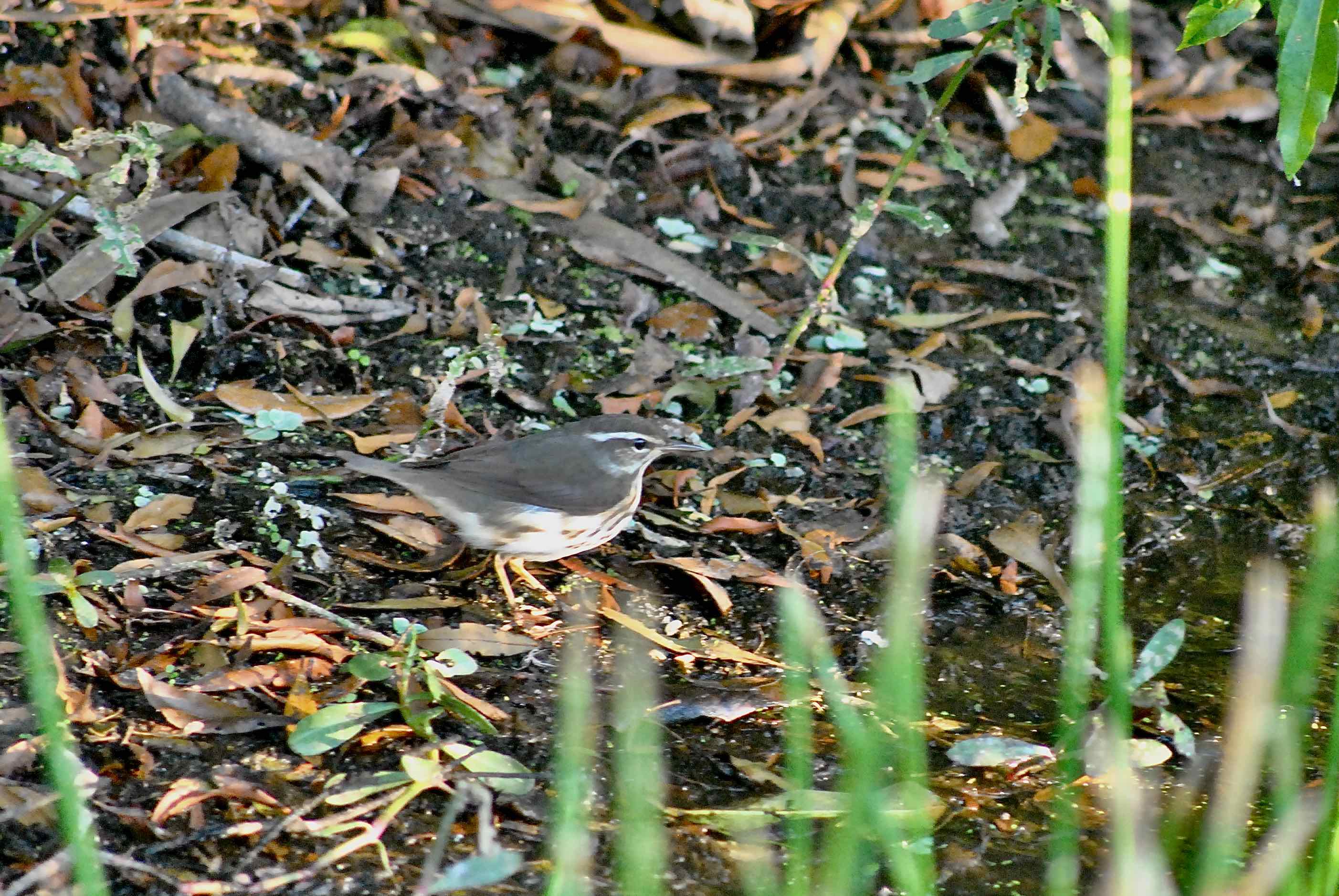
Louisiana waterthrush, photographed at Green Cay Nature Center, Boynton Beach, Palm Beach County, in April 2013.
The small size, striped chest and belly and the broad "eyebrow" line tells you that this is a waterthrush. The next question is, which waterthrush, Louisiana or northern?
The two birds are nearly identical, and both are migratory visitors to South Florida, passing through the region on their way to points north or south, depending on the time of the year. They're also similar in habit — they both tend to forage on the ground through leaf litter — and in habitat — both tend to hang along the edges of bodies of water.
But the clue that gives the identity of this bird away is that eyebrow line — it's white and remains broad to the nape of the neck just like a Louisiana waterthrush, Parkesia motacilia. The eyebrow in the northern is slightly yellow or cream colored and narrower.
Louisiana waterthrushes are fairly common birds found over most of the United States east of the Mississippi River Valley. It is a migratory bird, spending summers nesting along streams and rivers in the forests of the eastern U.S., while spending winters in the warm climes of the Caribbean, Mexico, Central America and northern South America. It does breed in Florida's Northern Panhandle, but the Florida Fish and Wildlife Conservation Commission calls it one of the state's rarest and least-studied breeding birds. Both Cornell University's Laboratory of Ornithology and Audubon Society say South Florida is merely a pitstop for the Louisiana waterthrush (and a rare one) as it makes its way north or south. The FWC, however, says the bird will winter over as far north as Central Florida.
In summer, it nests along wooded, gravelly streams; in winter, it finds the same kinds of places. Waterthrushes forage on the ground sifting through leaf liter for bugs and worms. They will catch a meal on the fly, hovering to take a bug off a leaf or snatching a winged insect over a stream. They'll also take the occasional small fish or frog.
They are tiny birds, with a body less than six inches long and a wingspan less than 10 inches. They have a white chest and belly with brown stripes; the neck usually is stripeless (on the northern waterthrush, the stripes extend through the neck). They're somewhat similar in size and coloring to the ovenbird. Ovenbirds, however usually have their tails sharply cocked upright, have a broad orange band extending along the top of the head and the striping on the breast and belly is much heavier than on either waterthrush. They also lack the white eyebrow.
A Louisiana waterthrush nest is a cup made of mud, twigs, pine needles and other materials lined with softer stuff like hairs, moss and soft plant parts like small roots. The nests are built on the ground, within a cavity along a stream bank, under a log, in the roots of a tree that has toppled over or other sheltered place.
Females lay between three and six eggs that require less than two weeks of incubation before hatching. Mom handles all the sitting duties. Both parents share the chore of feeding their offspring, however. The young waterthrushs are nest-bound for about 10 days before fledging. Cowbirds, those no-account parents of the avian world, often pick waterthrush nests as places to deposit their eggs.
The Louisiana waterthrush populations appears to be stable, and the International Union for Conservation of Nature rates it a "least concern" as to the possibility of its extinction.
These warbler-sized birds are in fact warblers, members of Parulidae, the wood-warbler family.
Links for Louisiana Waterthrush
